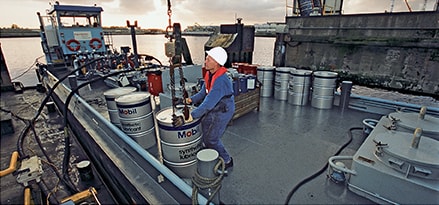To help ensure lubricants and greases deliver their maximum performance, they must be stored and handled correctly – both shore-side and on-board vessels. Poor handling, storing and dispensing methods can cause the products to deteriorate or become contaminated, which can result in machinery damage and potentially avoidable maintenance issues.
Problems can arise from:
- Container damage
- Water contamination from rain, seawater or condensation
- Dirty dispensing equipment
- Exposure to dust and dirt
- Mixing different brands or types of lubricant
- Exposure to excessive heat or cold
- Products exceeding their shelf life
Best practice guidelines
These lubricant handling, storing and dispensing guidelines will help you avoid the most common lubricant-related issues and help your bottom line.
